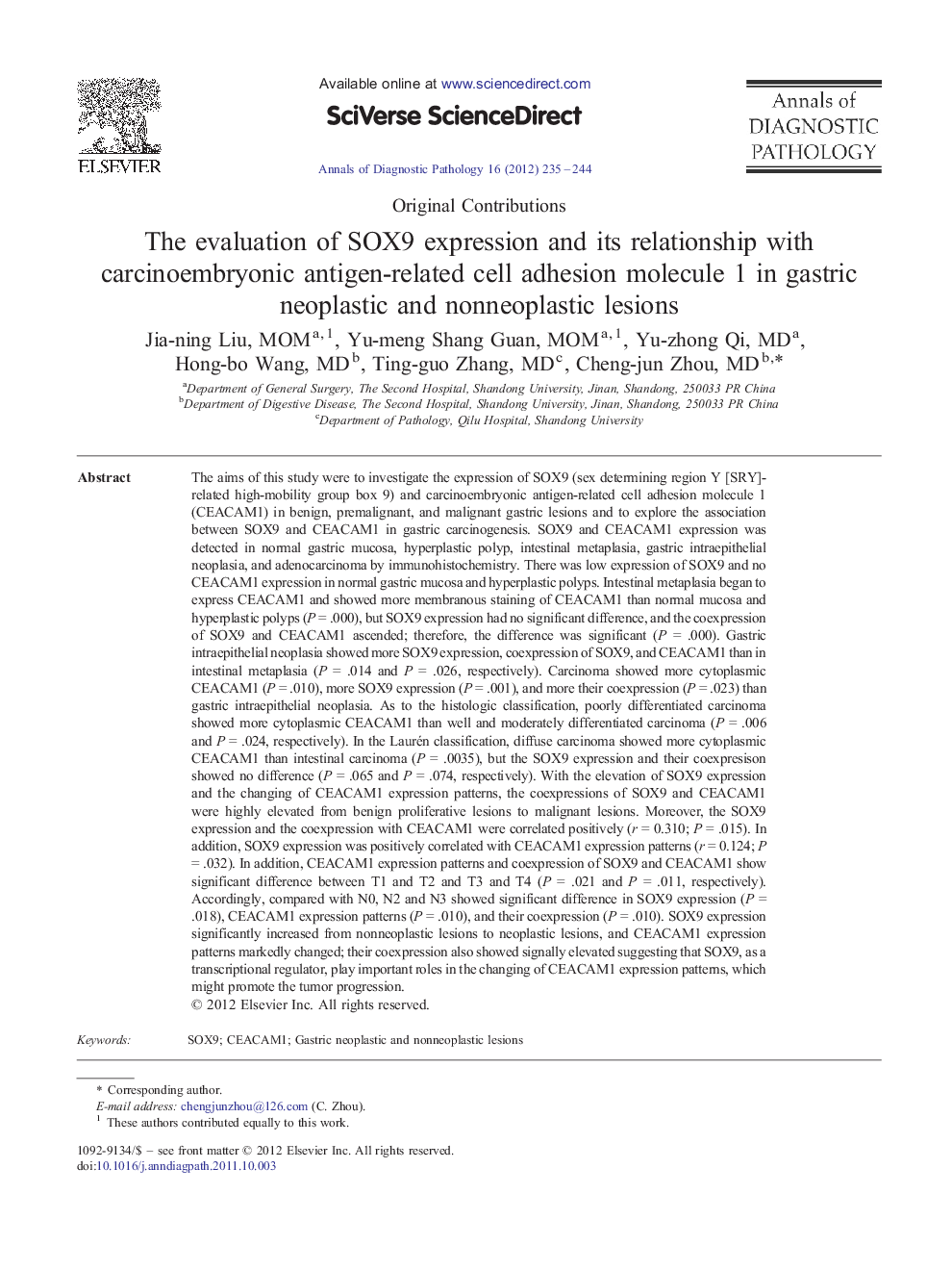| Article ID | Journal | Published Year | Pages | File Type |
|---|---|---|---|---|
| 4129995 | Annals of Diagnostic Pathology | 2012 | 10 Pages |
The aims of this study were to investigate the expression of SOX9 (sex determining region Y [SRY]-related high-mobility group box 9) and carcinoembryonic antigen-related cell adhesion molecule 1 (CEACAM1) in benign, premalignant, and malignant gastric lesions and to explore the association between SOX9 and CEACAM1 in gastric carcinogenesis. SOX9 and CEACAM1 expression was detected in normal gastric mucosa, hyperplastic polyp, intestinal metaplasia, gastric intraepithelial neoplasia, and adenocarcinoma by immunohistochemistry. There was low expression of SOX9 and no CEACAM1 expression in normal gastric mucosa and hyperplastic polyps. Intestinal metaplasia began to express CEACAM1 and showed more membranous staining of CEACAM1 than normal mucosa and hyperplastic polyps (P = .000), but SOX9 expression had no significant difference, and the coexpression of SOX9 and CEACAM1 ascended; therefore, the difference was significant (P = .000). Gastric intraepithelial neoplasia showed more SOX9 expression, coexpression of SOX9, and CEACAM1 than in intestinal metaplasia (P = .014 and P = .026, respectively). Carcinoma showed more cytoplasmic CEACAM1 (P = .010), more SOX9 expression (P = .001), and more their coexpression (P = .023) than gastric intraepithelial neoplasia. As to the histologic classification, poorly differentiated carcinoma showed more cytoplasmic CEACAM1 than well and moderately differentiated carcinoma (P = .006 and P = .024, respectively). In the Laurén classification, diffuse carcinoma showed more cytoplasmic CEACAM1 than intestinal carcinoma (P = .0035), but the SOX9 expression and their coexpresison showed no difference (P = .065 and P = .074, respectively). With the elevation of SOX9 expression and the changing of CEACAM1 expression patterns, the coexpressions of SOX9 and CEACAM1 were highly elevated from benign proliferative lesions to malignant lesions. Moreover, the SOX9 expression and the coexpression with CEACAM1 were correlated positively (r = 0.310; P = .015). In addition, SOX9 expression was positively correlated with CEACAM1 expression patterns (r = 0.124; P = .032). In addition, CEACAM1 expression patterns and coexpression of SOX9 and CEACAM1 show significant difference between T1 and T2 and T3 and T4 (P = .021 and P = .011, respectively). Accordingly, compared with N0, N2 and N3 showed significant difference in SOX9 expression (P = .018), CEACAM1 expression patterns (P = .010), and their coexpression (P = .010). SOX9 expression significantly increased from nonneoplastic lesions to neoplastic lesions, and CEACAM1 expression patterns markedly changed; their coexpression also showed signally elevated suggesting that SOX9, as a transcriptional regulator, play important roles in the changing of CEACAM1 expression patterns, which might promote the tumor progression.
